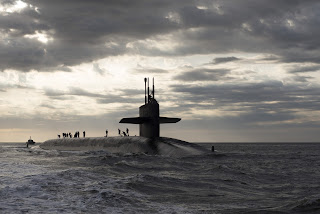Exploring Ocean Depths: How Deep Can a Submarine Go? The allure of the deep sea has always fascinated humankind. The vast, uncharted depths of the world's oceans have been a source of mystery and intrigue for centuries. To venture into these abysses, humans have developed remarkable underwater vessels known as submarines. But just how deep can a submarine go? In this article, we will delve into the technology, science, and history behind submarine exploration to understand the depths that these extraordinary machines can reach. The Evolution of Submarines Submarines have come a long way since their inception. They have played various roles, from clandestine war machines to cutting-edge research vessels. Understanding their historical development is essential to appreciating their current capabilities. Early Submersibles: The first recorded submersible, the Turtle, was built in 1775 during the American Revolutionary War. It could only reach depths of around 30 feet. World War Submarines: During World War I and II, submarines evolved significantly. While WWI-era submarines could reach depths of up to 300 feet, WWII U-boats could go as deep as 700 feet. The Nuclear Revolution: The introduction of nuclear power revolutionized submarine technology. The USS Nautilus, commissioned in 1954, was the world's first nuclear-powered submarine and could reach depths of over 700 feet. Modern Submarines: Today's nuclear-powered submarines, like the Virginia-class and Ohio-class, can dive to impressive depths of around 800 to 1,000 feet. The Science of Pressure in the Deep Sea To understand how deep a submarine can go, it's crucial to grasp the science of oceanic pressure. The pressure at various depths in the ocean increases significantly, creating enormous challenges for submersibles. Ocean Pressure Dynamics: As one descends into the ocean, the pressure increases due to the weight of the water above. Every 33 feet (or 10 meters) of depth adds approximately 14.7 pounds per square inch (psi) of pressure. Comparative Analysis: To put this into perspective, atmospheric pressure at sea level is about 14.7 psi. At 1,000 feet, the pressure is over 440 psi—nearly 30 times greater. Submarine Pressure Resistance: Submarines are designed to withstand these immense pressures. Their hulls are constructed using pressure-resistant materials like high-strength steel or titanium, and their engineering accounts for the pressures they will encounter. How Deep Can Submarines Go Today? Modern submarines are marvels of engineering, designed to withstand the intense pressures of the deep sea. They are equipped with advanced technology and systems that allow them to reach impressive depths. Nuclear-Powered Submarines: The most advanced submarines in the world are nuclear-powered. They can routinely dive to depths of around 800 to 1,000 feet, thanks to their robust pressure-resistant hulls and nuclear propulsion systems. Deep Submergence Vehicles (DSVs): Specialized deep submergence vehicles, like the Trieste or Alvin, are designed for extreme depths. The Trieste famously reached the Mariana Trench's Challenger Deep in 1960, descending to a depth of about 35,797 feet (10,911 meters). Technological Advancements: Advances in materials science, engineering, and design continue to push the boundaries of submarine technology. Autonomous underwater vehicles (AUVs) and remotely operated vehicles (ROVs) can explore even deeper, often reaching depths of 36,000 feet (11,000 meters) or more. The Limitations of Submersibles While modern submarines and submersibles have made incredible strides in deep-sea exploration, they are not without limitations. Depth Constraints: The maximum operational depth of submarines is limited by their design, materials, and technology. While nuclear-powered submarines can reach impressive depths, they cannot explore the deepest parts of the ocean, such as the Mariana Trench's Challenger Deep, which descends to over 36,000 feet. Extreme Pressure: Deeper depths bring increasingly extreme pressure, which poses significant challenges for vessel design and materials. Technological Innovation: Advancements in technology and engineering are ongoing, and future submarines may overcome some of these limitations, but the deep-sea environment will always present formidable challenges. Conclusion Submarines have enabled humanity to explore the enigmatic depths of the ocean, revealing a world of unparalleled beauty and complexity. While submarines have achieved impressive depths, the ocean's deepest recesses remain largely uncharted. As technology continues to advance and our understanding of deep-sea ecosystems grows, we can look forward to even greater discoveries in the future. The question of how deep a submarine can go is a testament to human ingenuity and our unwavering curiosity about the mysteries that lie beneath the waves.

Comments
Post a Comment